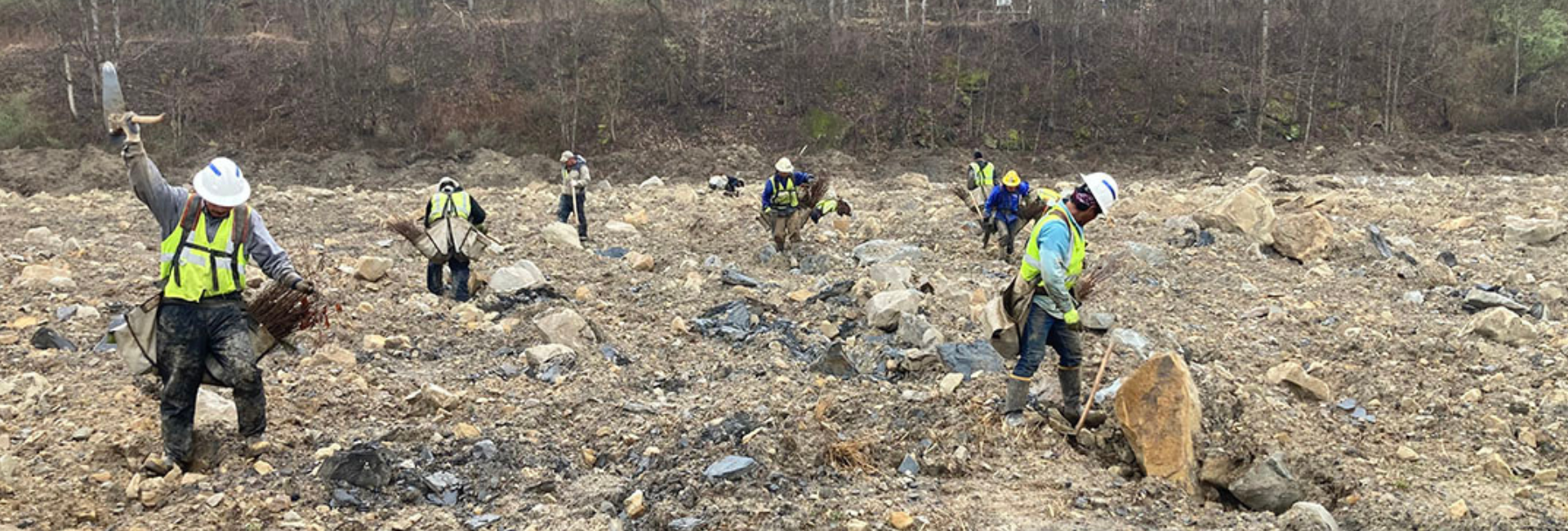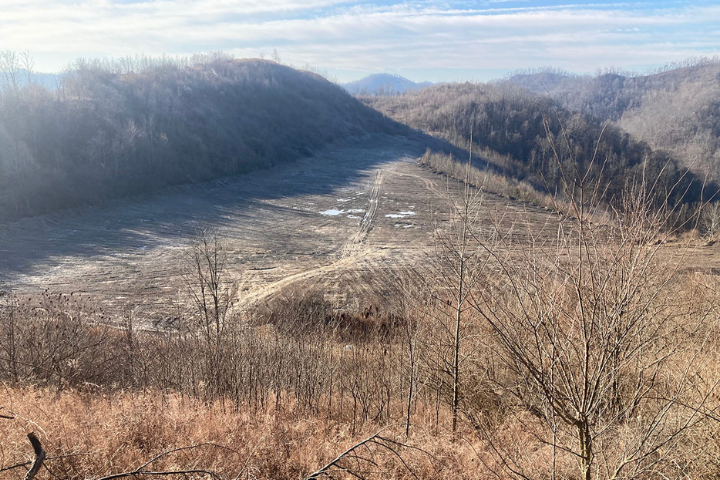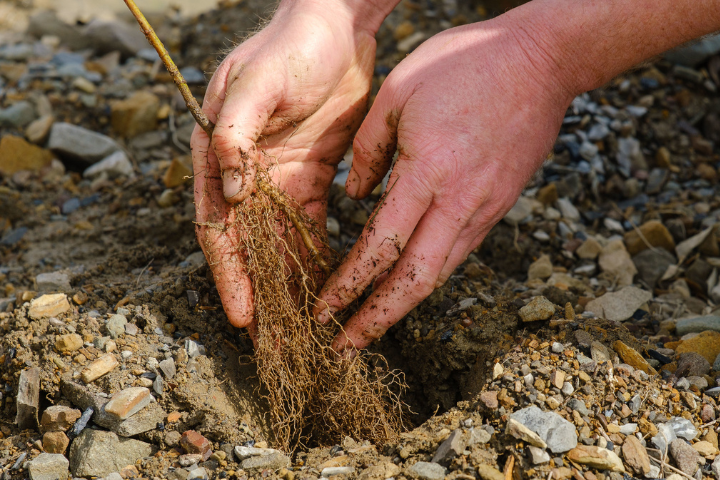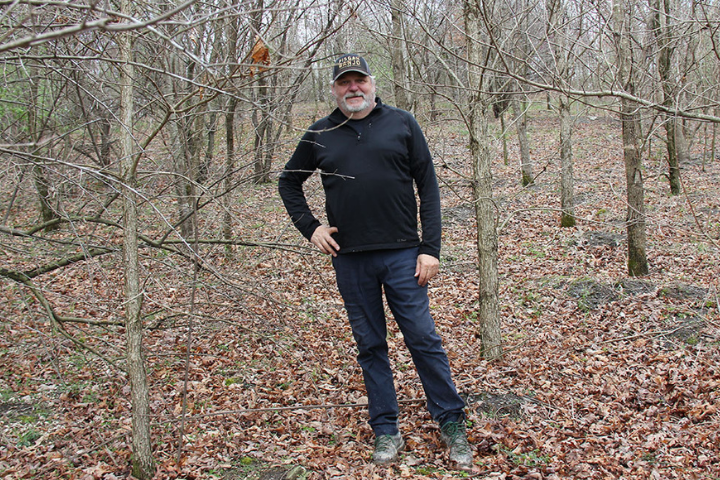On an old Kentucky coal mine, he's rebuilding a forest — and perhaps the local economy
April 23, 2024 | By Sophie Hares
In the mountains of eastern Kentucky, not far from the Appalachian hollow where President Lyndon B. Johnson declared his War on Poverty 60 years ago this week, a hilltop tells a story of American commerce, warts and all.
In the early 1900s, loggers with axes and crosscut saws felled the hardwood forests that covered these acres. In the 1990s the area was logged again, then it was surface-mined for coal from 2005 to 2015, a controversial process that requires regrading the land once mining has stopped and often results in severely compacted soil — so densely packed that it’s impossible for trees to once again grow.
By the time Green Forests Work, a nonprofit working to restore forests across Appalachia, arrived, it was a vast rocky field of scrubby non-native shrubs and grasses.
“If you’re going to put money into reforestation projects, there’s so much benefit to doing it on mined land,” says Chris Barton, the organization’s founder and president and a University of Kentucky professor of forest hydrology and watershed management. “They’re a scar on the landscape.”
GFW aims to repair the damage, which is not limited to the land itself. So far, it has planted more than 7 million trees across six states as part of its mission to not only regenerate forests and sequester carbon emissions but diversify local economies as coal production continues to decline. To do so, it works with landowners, local communities and organizations like the Priceless Planet Coalition, created by Mastercard in partnership with Conservation International and the World Resources Institute. The coalition aims to fund the restoration of 100 million trees at sites around the world, including this hilltop in Martin County.


In Kentucky, Green Forests Work, with support from the Priceless Planet Coalition, has planted more than 100,000 trees on a former coal mining site in Martin County. The land was extremely compacted, so first crews ripped up the top layer, banner photo, which creates conditions more suitable for the natural colonization of plants, above left. The seedlings are then planted, above right, and the site is monitored for five years. (Photos courtesy of Green Forests Work)
Barton, a Kentucky native, first spotted satellite images of the former surface mine a few years ago and contacted the landowner about reforesting the 150-acre site bringing in ecotourism to generate income.
With the owner’s approval, Barton and his team started preparing the land last year by ripping out non-native plants and tearing up the deep layer of compacted rock and soil left by the coal company when it stopped operations. The compacted soil stymies proper reforestation, and it also prevents rainwater from soaking in, creating more runoff, which can accelerate erosion and diminish water quality.
Employing local nurseries to grow seedlings and tree planters to put them in the ground, Barton’s team eventually hand-planted more than 100,000 trees at the site from 24 native species, including hazelnut, chestnut, white oak and black cherry.
Millions of grass and wildflower seeds were scattered across the former mine site, where fruit trees, including crab apple and persimmon, were also planted to encourage wildlife to visit the area.
Given that tree canopies require up to 20 years to fully develop, GFW is taking a long-term view. Yet the Martin County seedlings are already thriving, and birds and bats are returning to the area. In neighboring GFW projects, camera traps spot wildcats and black bears padding past.

Above right, Chris Barton, president of founder of Green Forests Work, stands in an 18-year-old oak and hickory forest he planted on a coal mine in eastern Kentucky in 2006. (Photo courtesy Green Forests Work)
These reforestation projects also offer an opportunity to use the local environment to build up new businesses, Barton says. In communities such as those in Martin County — which remains one of the most impoverished counties in the U.S. six decades after President Johnson’s pledge — residents are still struggling to find their economic footing after mining operations have moved on or turned to methods that require far fewer workers.
In addition to work generated directly by reforestation — tree planters, equipment operators, nursery workers — reforestation projects can include areas for camping, hiking trails and mountain bike tracks that can help pull in visitors to areas that were once far from the tourist trail and start to create ecotourism jobs.
Now Barton is setting his sights higher. Estimating that Appalachia has a million-plus acres of legacy mine land, he hopes his nature-based model can be easily replicated and tweaked to help reclaim sites impacted by mining around the world.
He’s already adapted it to the Australian outback after winning a Fulbright award to help replant former coal mine sites in Queensland and regenerate habitats for koalas — wildfires in recent years have destroyed vast swaths of their land — other indigenous animals.
Meanwhile, he can take a moment to appreciate what his project means for his home state. “In Appalachia, which has some of the worst poverty in the United States, it’s really good that we can contribute some economic stimulus to these communities,” he says. “Overall, it’s a win-win-win to do this type of work for the environment.”